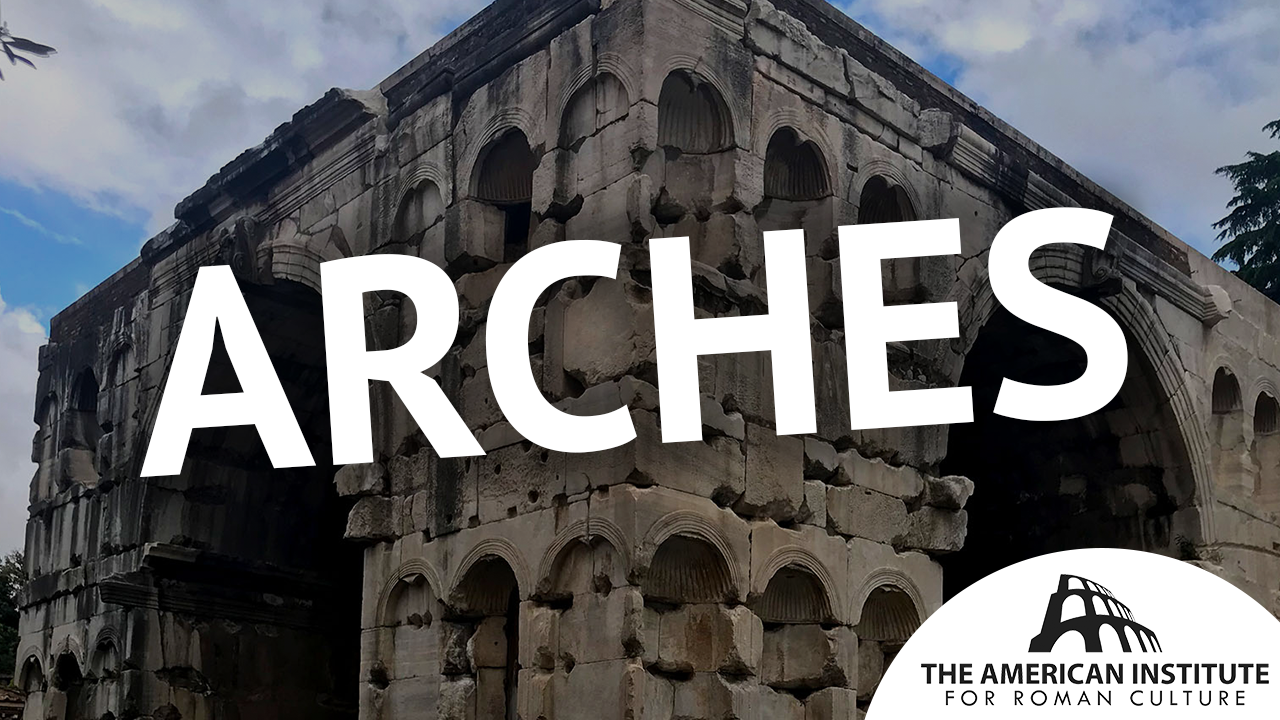Start with our video overview:
The Arch of Arcadius, Honorius, and Theodosius II is a lost triumphal arch commissioned by the senate to commemorate a victory by the three co-emperors against the Goths at Pollentia in 405 CE. The arch may have framed the western end of the Pons Neronianus, which likewise no longer stands, although one of its foundations remains visible at low-tide beneath the modern Ponte Vittorio Emanuele II. However, there is some debate about the relation between the Arch of Arcadius, Honorius, and Theodosius II and the Pons Neronianus because of the possibility that the latter was already disused by the early fifth century, evidenced by its absence from relevant accounts. A twelfth-century guide to Rome, Mirabilia Urbis Romae, lists the bridge as visible, but does not include the arch as it was misattributed to Severus Alexander, emperor from 222-235 CE.
An unnamed key player in the victory commemorated by the inscription on this triumphal arch was the general Stilicho, successively the guardian and then father-in-law of the emperor Honorius. The inscription on the arch addressed Arcadius as a living emperor, indicating that it was completed before his death in 408. Arcadius ruled the eastern part of the empire while his brother Honorius ruled the west; Arcadius proclaimed his infant son, Theodosius, as Augustus in 402, making him the youngest ruler to have used the title. During Honorius’s reign, the city of Rome was sacked for the first time in more than eight centuries, indicating the instability of late antiquity which precluded the fall of the western empire. Material evidence of this political shift can be seen in the strengthening of the Aurelian Walls by Honorius during his thirty-year reign.
Although it comes from a later period, the dedication of this arch demonstrates continuity with republican and early imperial architectural and ideological programmes in Rome. From the second century BCE, arches appeared in the landscape of the city, and by the imperial period, this architectural type was integrated into the tradition of the triumphal procession.
In the historical record, this arch is first attested in the Itinerary of Einsiedeln which dates to the ninth century CE, some six centuries after its construction. The Itinerary of Einsiedeln was an early guide to the city of Rome for Christian pilgrims, named after the Swiss abbey in which it was preserved. It is also known that the arch remained standing into the 15th century, however by this time (as was common between the medieval and early modern periods), its marble facing had been stripped and the brick substructure exposed. Since that time, all traces of the arch have disappeared, although it remains preserved in earlier historical sources which are crucial in reconstructing various phases of the city.
References
Last Statues of Antiquity (LSA) Database, University of Oxford.
- Taylor, “Tiber River Bridges and the Development of the Ancient City of Rome”, (Virginia 2002).
- Platner, “A Topographical Dictionary of Ancient Rome”, (Chicago 1929).
Arcus Arcadii Honorii et Theodosii: a marble arch erected by the senate after the victory of Stilicho at Pollentia in 405 A.D. in honour of three emperors and to commemorate their victories over the Goths (CIL VI.1196; HJ 598). It stood at the west end of the Pona Neronianus and probably spanned its approach. In the Mirabilia (ch. 5) it is called arcus aureus Alexandri, and erroneously located near the church of S. Celso instead of S. Urso. It was standing in the fifteenth century, but had been stripped of its marble facing.
This content is brought to you by The American Institute for Roman Culture, a 501(C)3 US Non-Profit Organization.
Please support our mission to aid learning and understanding of ancient Rome through free-to-access content by donating today.
Cite This Page
Cite this page as: Darius Arya, The American Institute for Roman Culture, “Arch of Arcadius, Honorius, and Theodosius II” Ancient Rome Live. Last modified 11/11/2019. https://ancientromelive.org/arch-of-arcadius-honorius-and-theodosius-ii/
License
Created by The American Institute of Roman Culture, published on 11/11/2019 under the following license: Creative Commons: Attribution-NonCommercial-ShareAlike. This license lets others remix, tweak, and build upon this content non-commercially, as long as they credit the author and license their new creations under the identical terms. Please note that content linked from this page may have different licensing terms.



